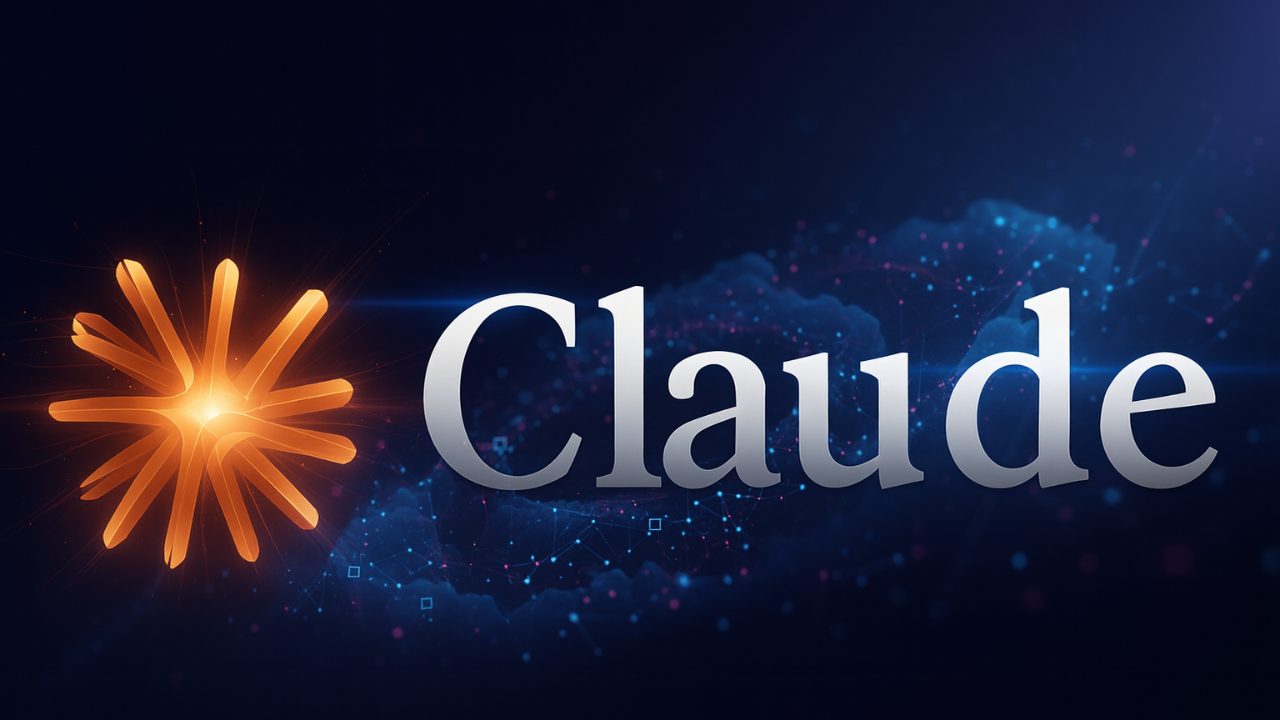Your patients are online. They’re searching for health information, connecting with providers, and sharing their experiences.
To thrive in this digital age, your healthcare practice needs a smart social media strategy.
In this guide, we’ll cover the benefits of social media for the healthcare industry, creating engaging content, and even the legal aspects you need to know.
Let’s explore how platforms like Facebook, Instagram, and TikTok can help you reach new patients and build stronger relationships with your community.
The Role of Social Media in Healthcare
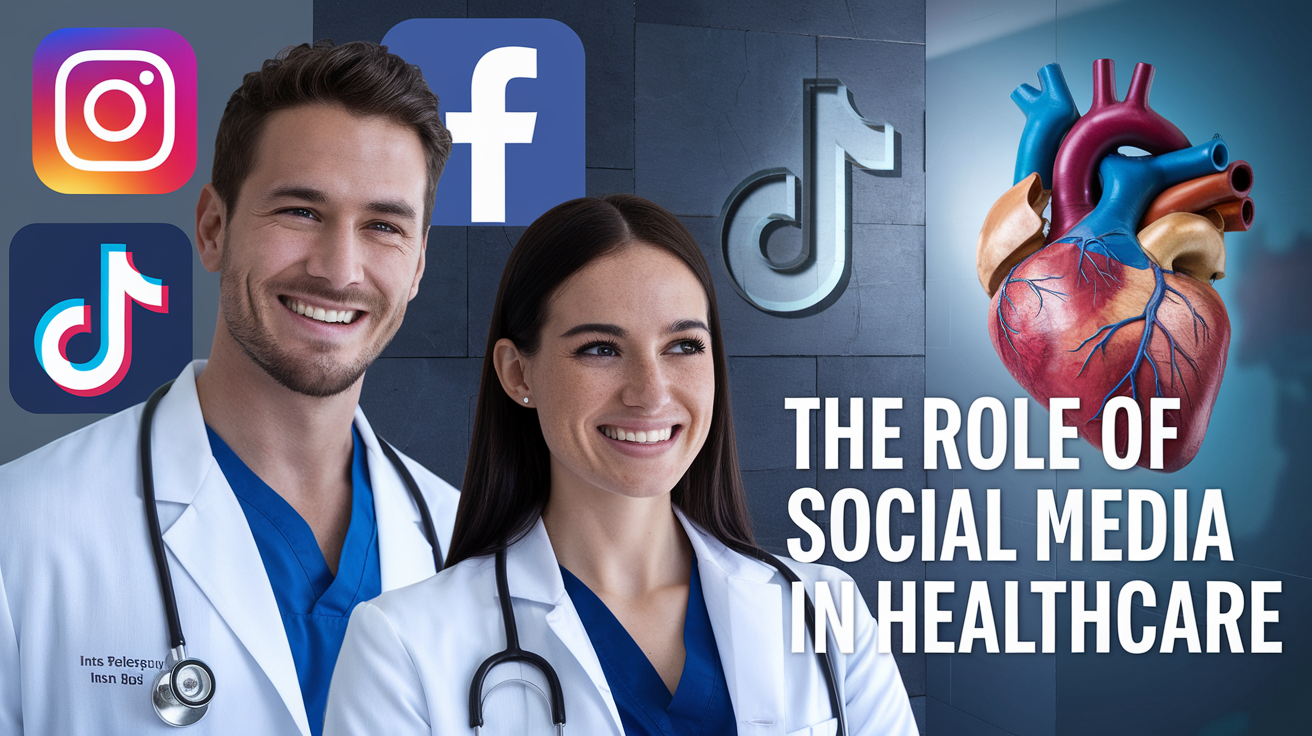
Running a healthcare practice is no easy task. You’re juggling patient care, managing staff, and staying up-to-date with the latest advancements. Social media can feel like just one more thing on your to-do list.
Think of Facebook as your community hub. Healthcare organizations are seeing great results with frequent posts – up to 20 times per week! Use it to share important updates, answer common questions, and provide valuable information to prospective patients.

(Source)
Instagram is where you can really show off your work visually. Healthcare organizations are posting around 13 times a week, using images and videos to connect with their audience. It’s a great way to provide patient education and build trust.
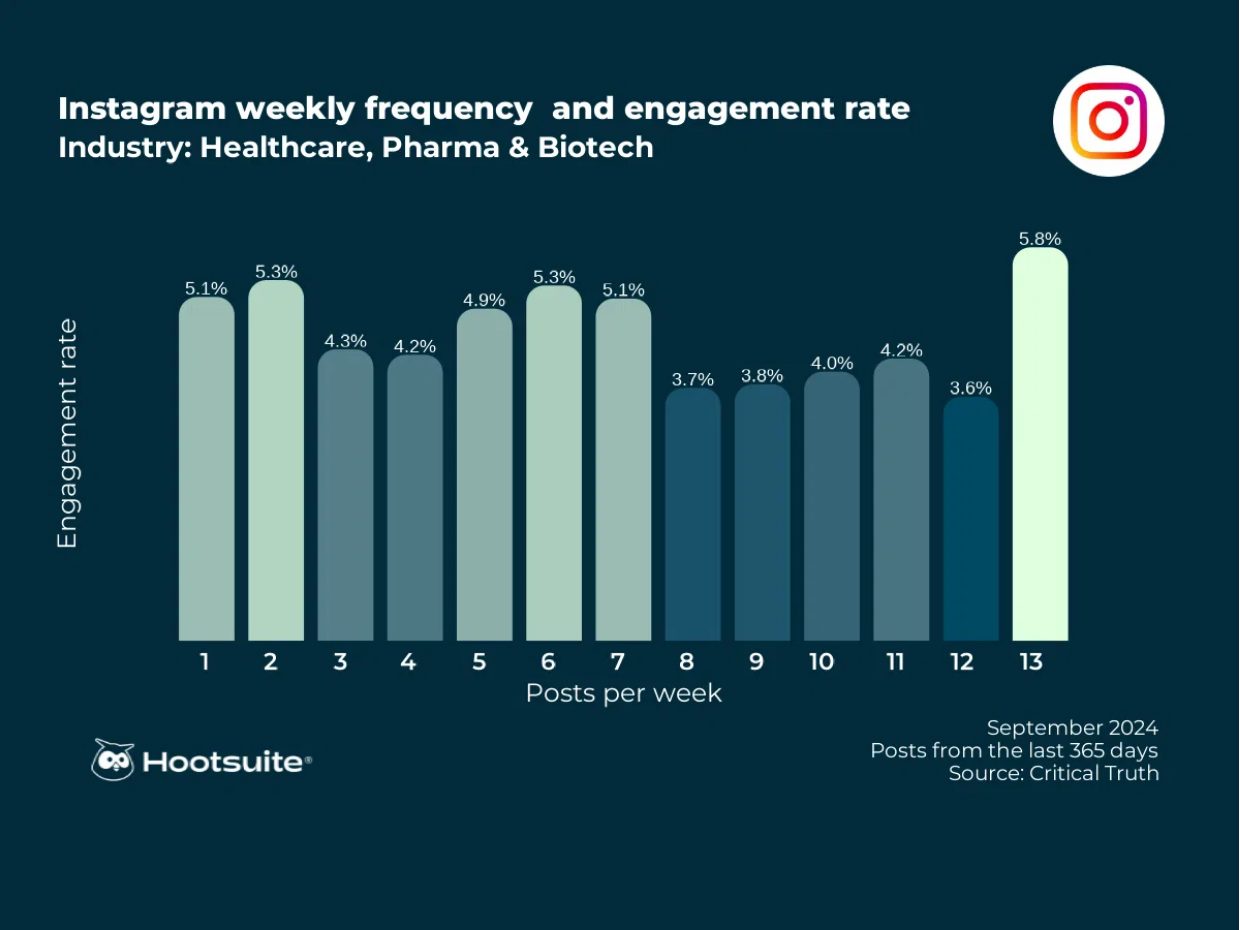
(Source)
And yes, even TikTok has a place in healthcare marketing. It’s where you can connect with younger healthcare consumers and expand your reach to a wider audience. (And – as we’ll show you soon – this audience isn’t as young as you might think)
Pro Tip:
Staying active and engaged on social media requires time and effort, which can be challenging for busy health professionals like you. Think about bringing in a digital marketing agency to handle your social media strategy, allowing you to dedicate more time to your patients and practice.
What are the advantages of social media in healthcare?
Your patients have questions. They want to know what to expect during a procedure, how to prepare for surgery, or who to contact when they need support. Social media lets you answer these questions and provide immediate support, building trust and loyalty along the way.
For example:
Imagine a patient is scheduled for a knee replacement. They’re nervous and unsure of what to expect during recovery. You create a short video on Facebook showing a typical recovery timeline, including exercises and tips for managing pain.
This not only educates the patient but also shows that you care about their well-being. That’s two-way communication in action, and it’s a game-changer for building a positive brand image.
Pro Tip
Social media creates a sense of community as well. When patients can connect with each other and share their experiences, they feel supported and understood – which can be incredibly valuable during challenging health journeys
Developing a Social Media Strategy for Healthcare
Let’s explore how platforms like Instagram, Facebook, and TikTok can help you share your story and attract new audiences.
Creating a Medical Instagram
Instagram is a dynamic platform where healthcare providers can truly shine. It’s where you can connect with your community, build trust with patients, and attract new ones.
Reels are a game-changer. You can use them to share quick tips, explain medical treatments, have fun with your current and future clients, or give a behind-the-scenes look at your practice. The visual format makes it easy to break down complex health information and capture the attention of a larger audience.
Instagram Stories, meanwhile, are perfect for real-time interaction. Use polls and Q&A features to gather feedback from active users and provide patient education on important health topics.
Remember, Instagram is a visual platform. High-quality images and videos are essential. Show your medical professionals, highlight your services, and give patients a clear picture of what to expect when they visit your practice. This transparency helps increase patient satisfaction and build confidence in your care. It’s also useful for delivering information in quick, bite-sized form.
Collaborating with micro-influencers in the health and wellness space is another smart strategy. These influencers can help you reach a wide audience and establish credibility with diverse patient groups.
And don’t forget about hashtags and Instagram Ads. Targeted hashtags like #healthcare or #wellness can help you reach the right audience. Instagram Ads allow you to further refine your reach and connect with healthcare sector audiences that match your practice’s demographics.
By using these strategies, you can strengthen your social media marketing efforts and make Instagram a valuable part of your digital marketing strategy.
Facebook and Healthcare: all you need to know
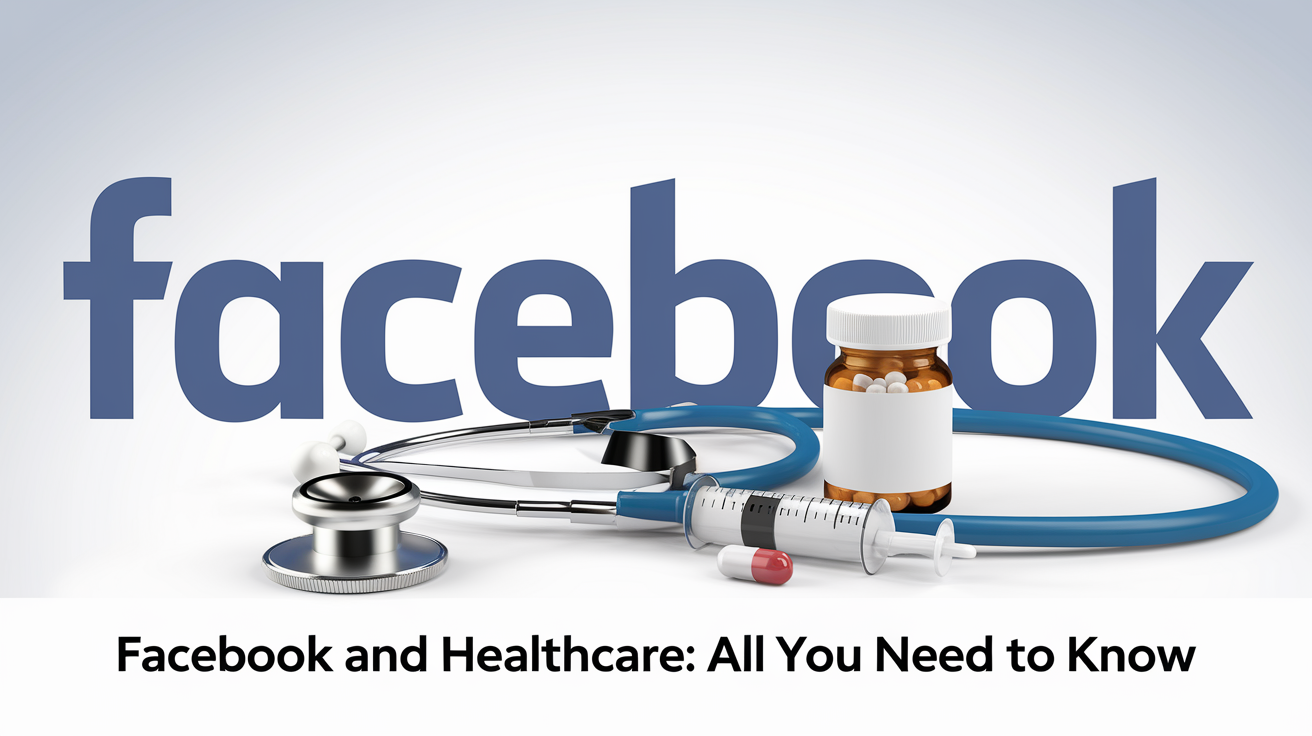
So you’ve mastered the art of visual storytelling on Instagram. Now, let’s talk about Facebook, another essential platform for healthcare providers like you.
Here’s how Facebook can help you grow your practice:
1 – Precision Targeting:
Run an ad campaign that reaches only those people in your area who are interested in specific services you offer, like diabetes management or pediatric care. With Meta Advantage+, you can automatically target the most relevant audience for your medical practice, ensuring your ads are seen by the right people.
2 – Community Building:
Facebook Groups are a great way to create a space for you to connect with current patients on a deeper level. Share valuable information, answer questions, and build relationships that extend beyond your office walls.
3 – Simplified Lead Generation:
Want to make it easy for people to schedule appointments or sign up for your newsletter? Facebook’s Lead Generation Ads allow you to capture patient information right within the platform, making the process easier for potential patients and providing valuable insights into your audience‘s needs.
Let’s look at one medical company that understood how to use Facebook the right way, (and one that missed the mark!)
Healthcare ads on Facebook
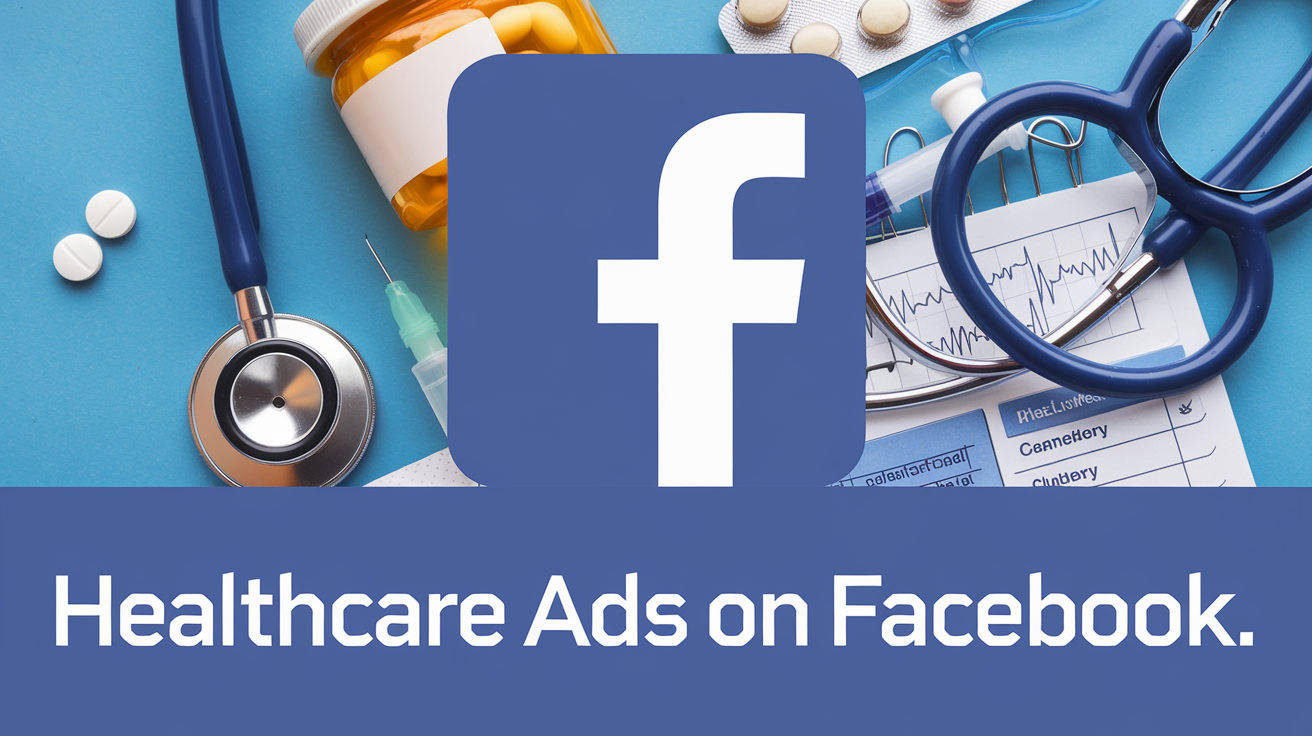
Healthcare TikTok videos
You’re killing it on Facebook and Instagram. Now, it’s time to tap into the power of TikTok, a platform known for its short, engaging videos and ability to connect with a younger audience.
Think of TikTok as your healthcare highlight reel, where you can show your expertise, share valuable information, and even have a little fun.
Before you jump in, however, there are a few things healthcare providers should keep in mind:
1 – Know Your Audience:
(Source)
While Gen Z still loves TikTok, the platform is attracting more and more adults. In fact, the largest group of US users in 2024 is 25-34-year-olds, making up 35% of the platform. This means your medical practice can reach a broader audience than you might expect.
2 – Keep it Real: Authenticity is key on TikTok. Avoid overly promotional content and focus on building genuine connections. Share useful insights, answer common questions, and let your personality shine through.
3 – Embrace the Trends (but be mindful): See a trending dance challenge related to mental health awareness? Join in. Is there a popular sound that can be adapted to explain the benefits of a healthy diet? Use it. But always make sure the trend aligns with your brand and message.
4 – Educate and Entertain: Make learning fun. Create a catchy song about the importance of regular checkups. Use animation to explain how vaccines work. Share a relatable skit about dealing with allergies. The possibilities are endless. 5 – Show the Human Side of Healthcare: Introduce your team or share patient success stories. You will need their permission to ensure HIPAA compliance (we’ll be telling you more about the legal side of things soon).
Need some more inspiration? Try these ideas:
- Myth busters: Debunk common health myths or misconceptions in a fun, informative way.
- Quick tips: Share quick tips for healthy living, like how to properly wash your hands or perform a self-breast exam.
- Patient stories: Share inspiring stories of patients overcoming health challenges.
- This or That: Create engaging polls asking viewers to choose between healthy and unhealthy habits.
Ultimately, TikTok offers a unique opportunity to connect with a new generation of patients and establish your practice as a trusted resource in the digital age. With a little creativity and strategy, you can create TikTok videos that inform, engage, and attract new patients.
Healthcare social media posts
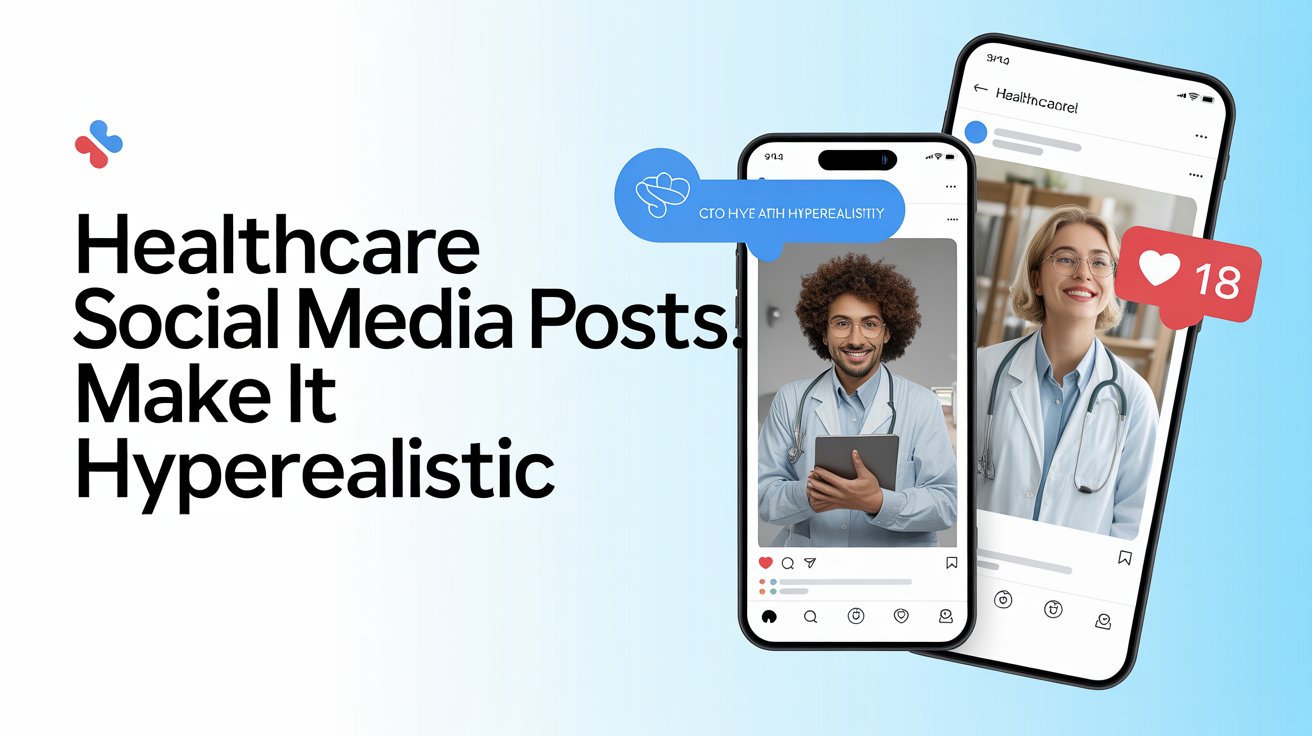
You’re sharing valuable health information on individual platforms, but now it’s time to refine your overall social media strategy. How do you create video content that works across different platforms, educates your audience, and strengthens your brand?
Consider this: you’ve produced an informative video explaining the benefits of a new minimally invasive surgical technique.
- Facebook: Share the full-length video, allowing viewers to understand the procedure’s complexities.
- Instagram: Create a series of shorter Reels showing different aspects of the technique: patient testimonials, the technology used, and the faster recovery time.
- TikTok: A quick, attention-grabbing video with trending music demonstrating the procedure’s precision and minimal scarring.
Here’s what healthcare providers need to consider when creating videos for different platforms:
- Purpose: Is your video meant to educate patients about a specific condition, promote a new service, or build trust in your expertise?
- Length: A detailed explanation of a treatment plan might warrant a longer Facebook video, while a quick tip about managing seasonal allergies is perfect for a concise TikTok.
- Editing: Use captions, text overlays, and engaging visuals to make complex medical information more accessible and appealing. It’s hard to go wrong using Cap Cut for this.
Social Media Post Ideas for Healthcare

Now, let’s brainstorm some fresh, attention-grabbing post ideas to keep your content calendar full and your followers coming back for more.
Here are a few outside-the-box ideas to spark your creativity:
- “Unboxing” Medical Supplies: Create a series of “unboxing” videos where you unpack and explain the purpose of various medical supplies or equipment. This can be a fun way to educate your audience and demystify the healthcare experience.
- “Then vs. Now” in Healthcare: Share a series of posts highlighting the evolution of medical technology or treatments. This can be a fascinating way to show progress in healthcare and generate conversation about the future of medicine.
- “Did You Know?” Health Facts: Share surprising and intriguing health tips and facts that your followers might not know. This can be a great way to spark curiosity and encourage further research.
- “Behind the Scenes” of Medical Research: Offer a glimpse into the world of medical research by sharing videos or photos of your team conducting experiments or analyzing data.
- Make sure it’s all HIPAA compliant!
Speaking of which, let’s show you why this might just be the most important part of your medical social strategy.
Navigating Social Media Policies in Healthcare
When developing a social media policy in healthcare, HIPAA compliance is critical to avoid penalties.
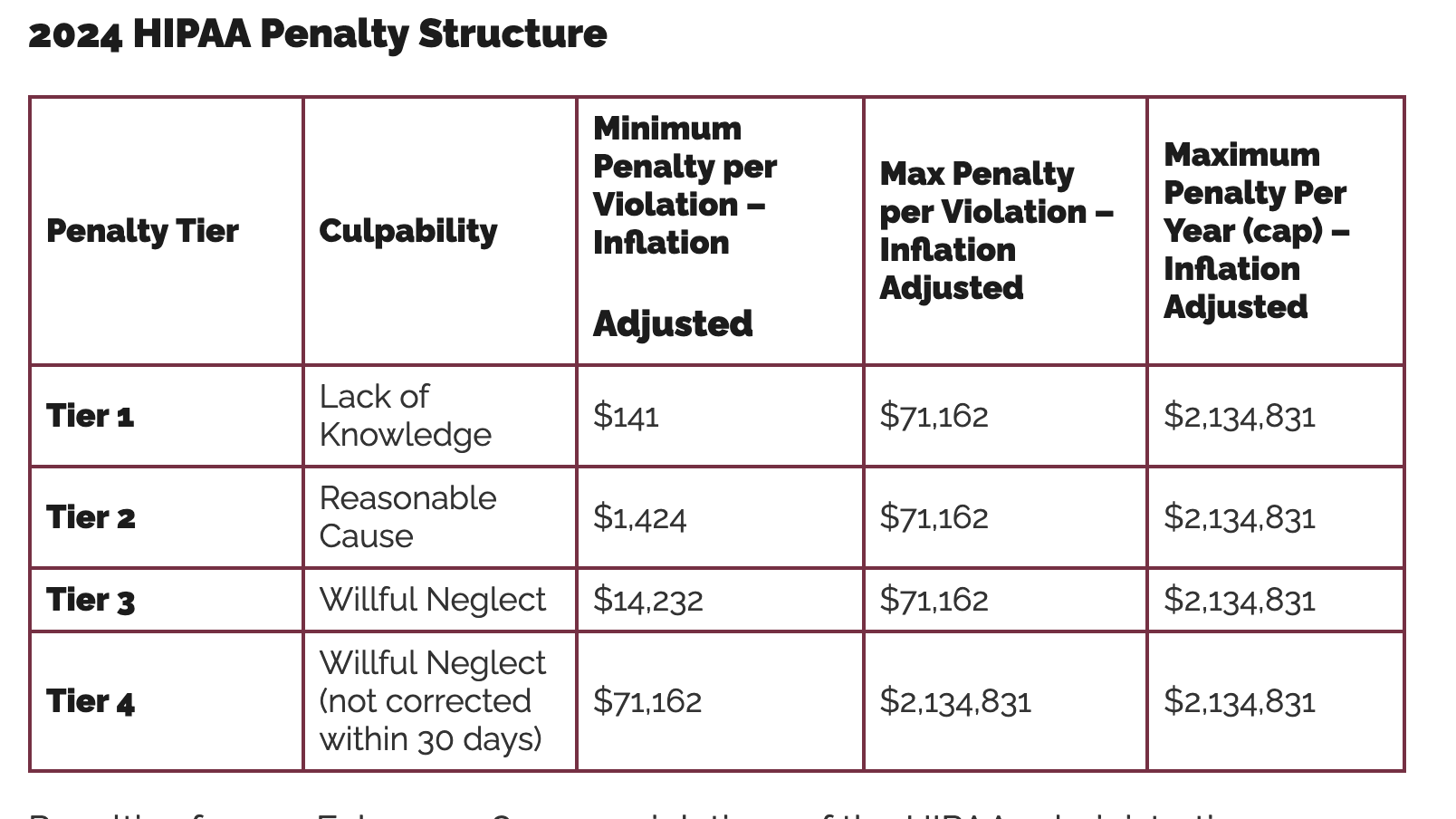
In a nutshell, here’s the 4 main rules all healthcare practitioners must follow:
- Prohibit the sharing of patient information (including photos) without written authorization.
- Train all employees—even those without direct access to patient records—on what constitutes Protected Health Information (PHI) and proper social media conduct.
- Avoid discussing patient cases publicly, as any identifiable detail can lead to violations.
- Monitor social media activity to ensure no impermissible disclosures are made.
Different platforms also have distinct rules. Facebook and Instagram both prohibit the use of personal health information in ads without consent, while TikTok restricts the collection of health data and limits certain health-related ads for users under 18. According to TikTok:
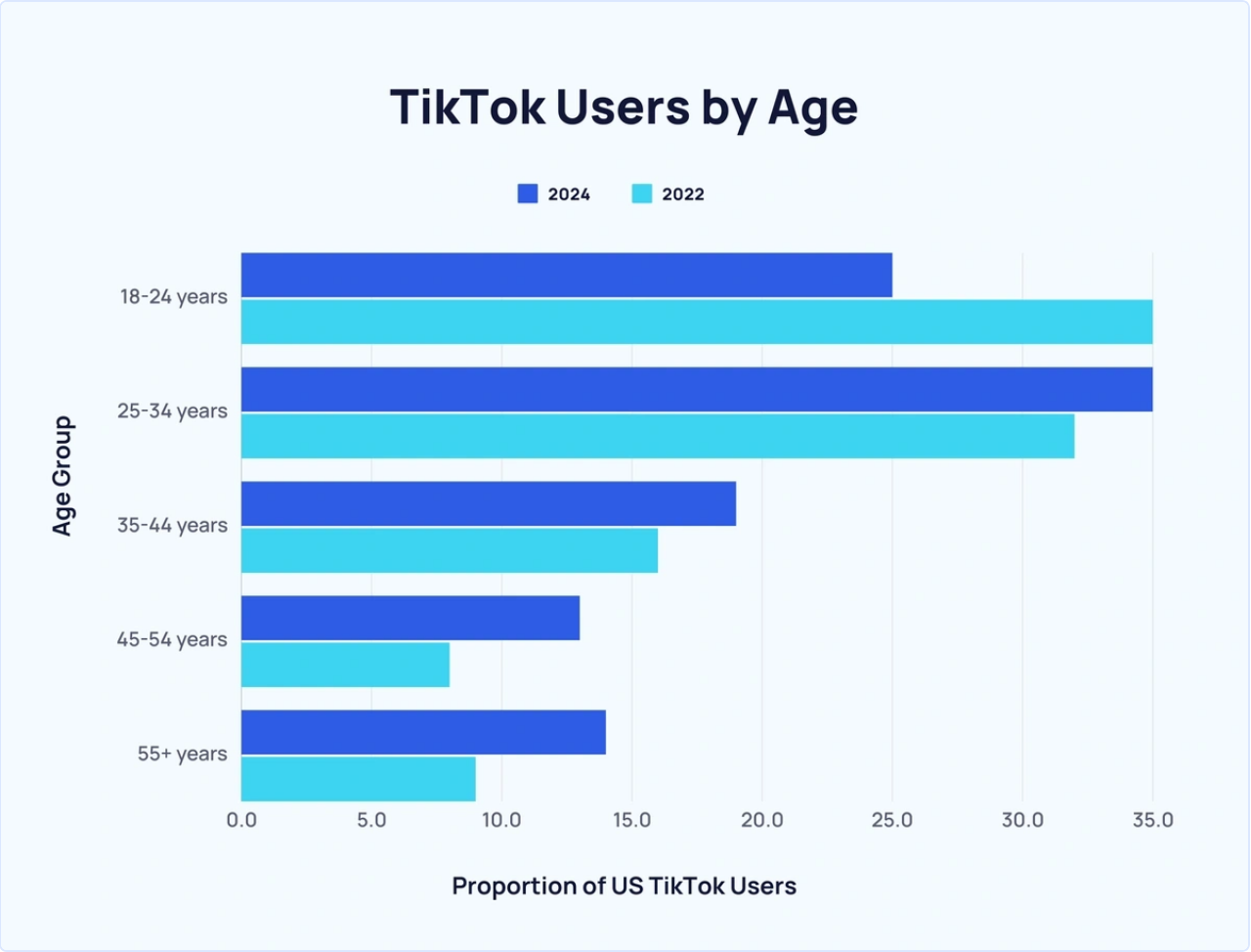
Key Takeaways
- Specific posting frequencies are required (Facebook 20x/week, Instagram 13x/week, Tik Tok twice a week)
- Legal compliance is critical – HIPAA violations bring heavy fines
- Same content must be adapted differently for each platform
- Two-way patient communication builds trust and community
- TikTok’s audience is older than assumed (35% are 25-34) and should be a big part of your online patient engagement
Looking for healthcare social media services?

Your social media channels are powerful tools for connecting with your community and building a strong online presence. However, managing social media for healthcare requires expertise.
Nomadic Advertising creates engaging campaigns for healthcare companies like you. We produce educational content that attracts new patients and takes your social platforms to the next level.
Ready to see the difference? Book a free 30-minute consultation today and let’s make your social media the picture of health!




